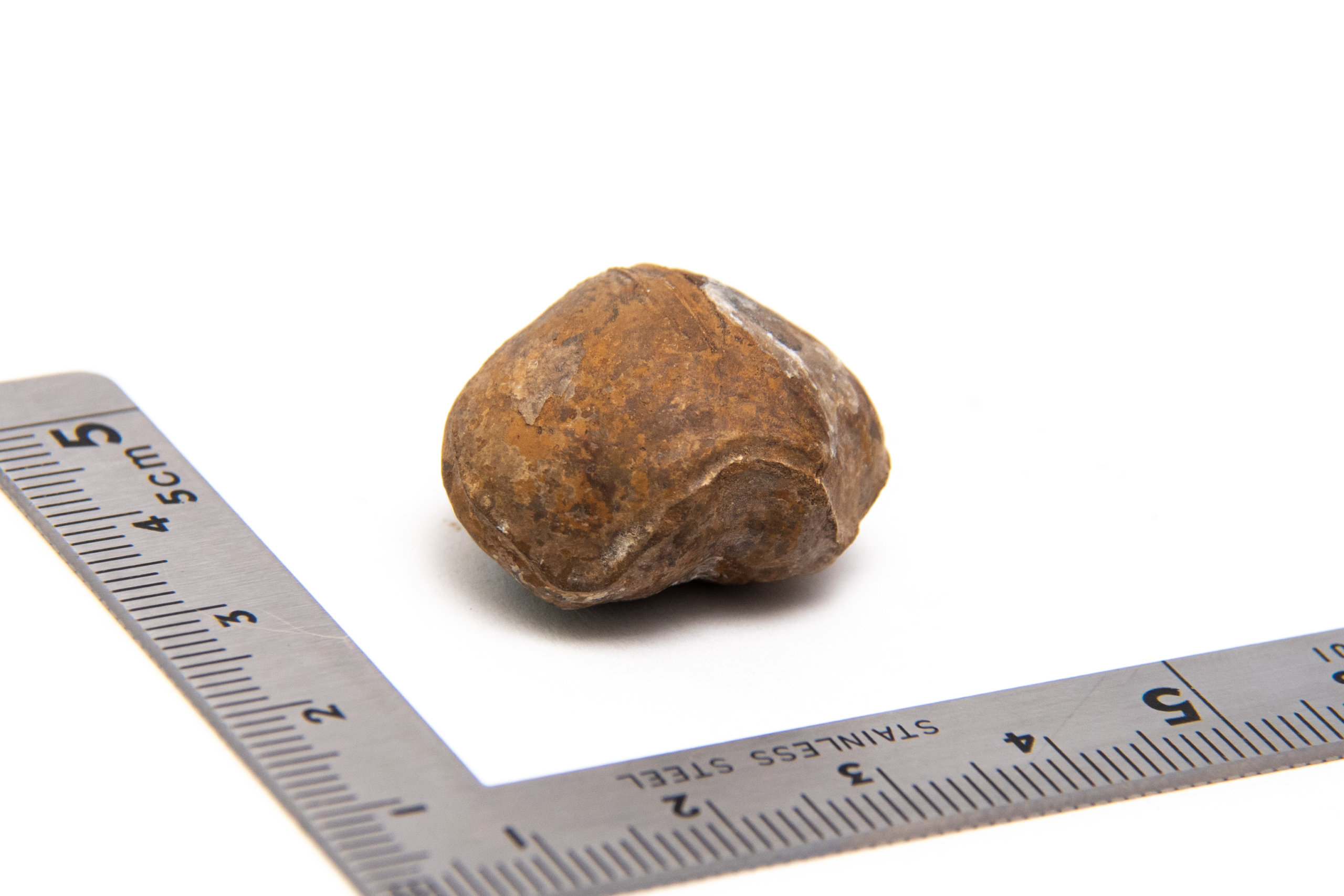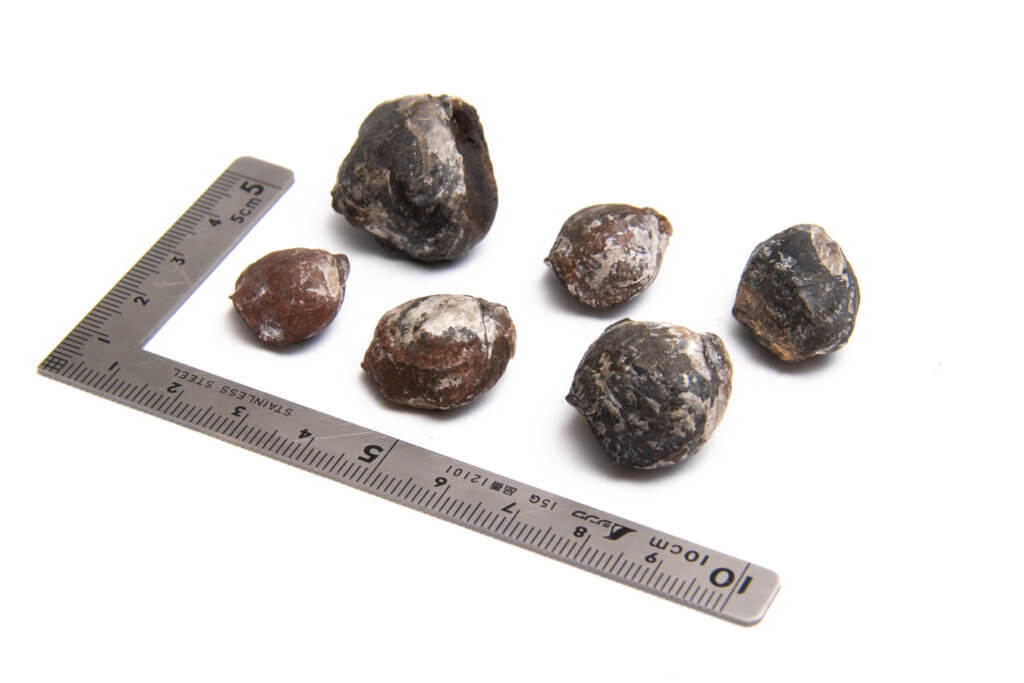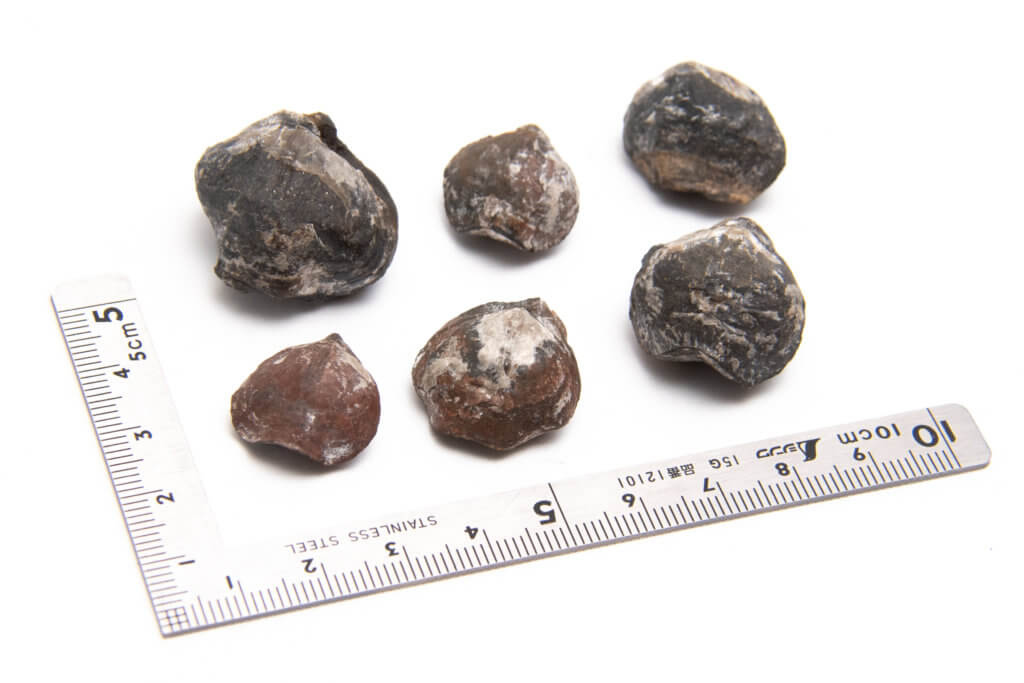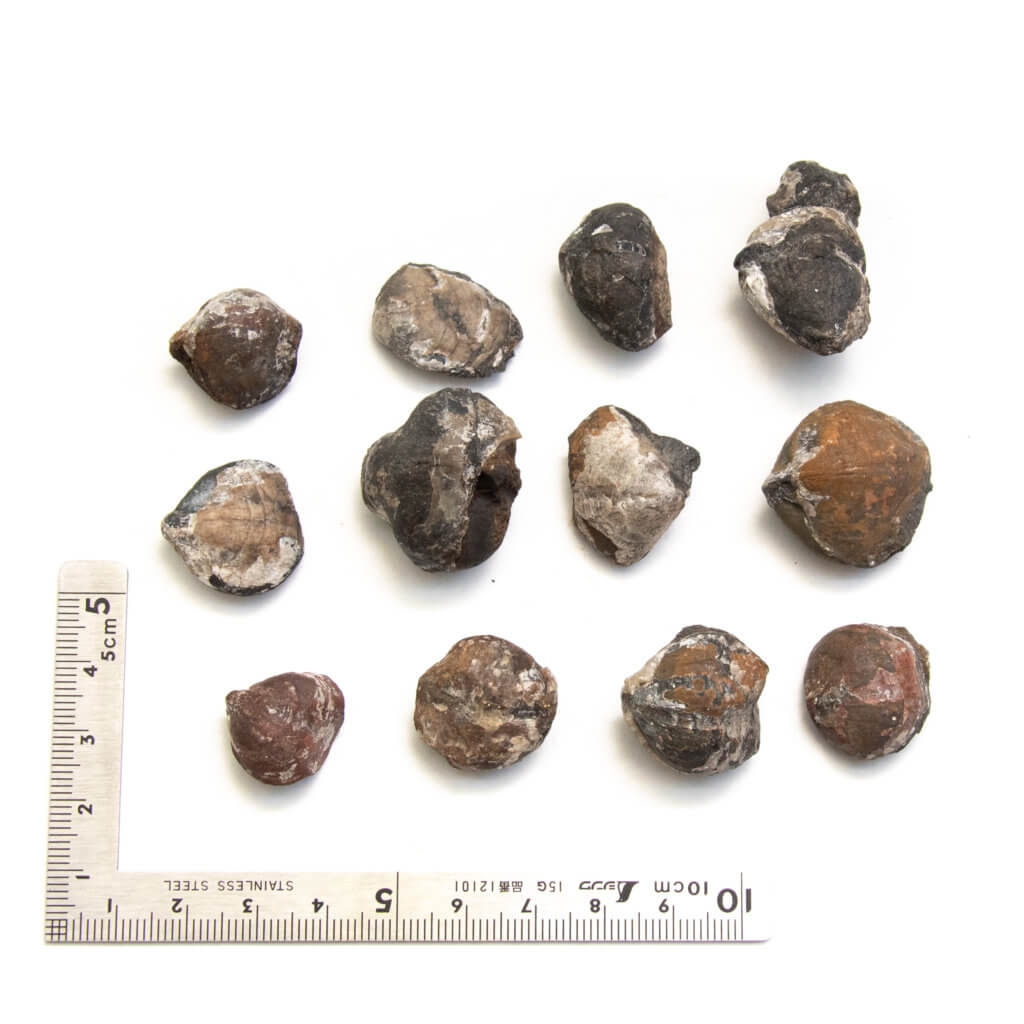Catalog Number: CG-0086
The Brachiopod genus Composita was existent from 376 to 252 million years ago. Like a large majority of the genera that I collect, the Permian-Triassic Extinction event caused them to go extinct. This specimen was collected in April of 2019 was identified early on by J. Harper, a trusted expert in local fossil species. P.E. Raymond found specimens in several locations
Composita is found on every continent except for Antarctica, so far. There is a large portion of Antarctica that is unexplored for the sake of fossil collecting. This particular specimen is a steinkern, and it is the fossil preservation that I’ve found most if any of this genus.

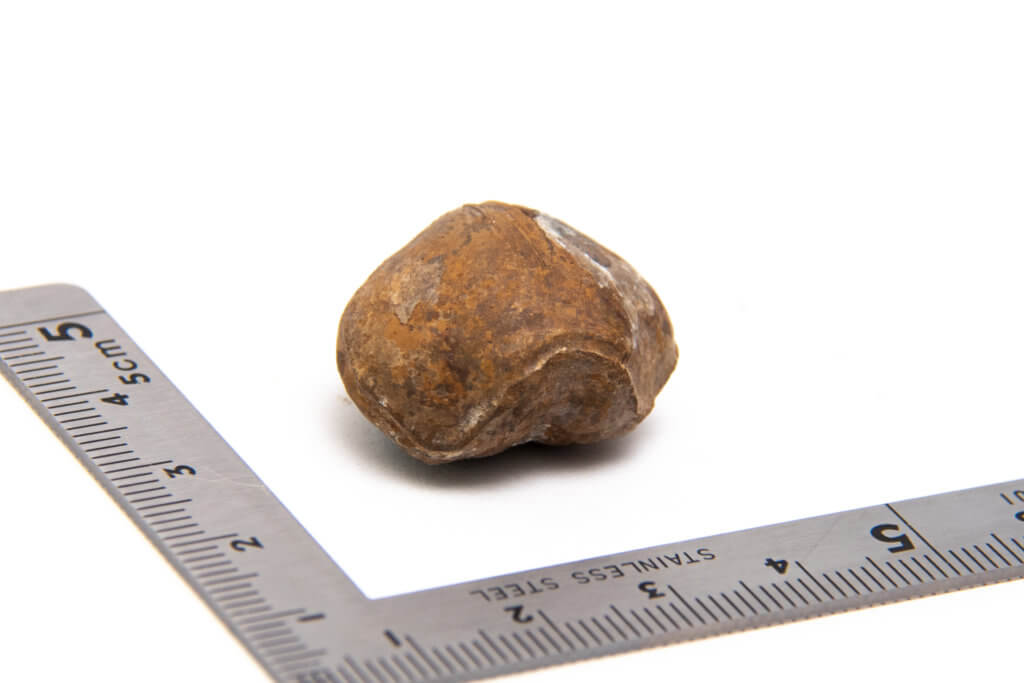

Specimens described by Raymond
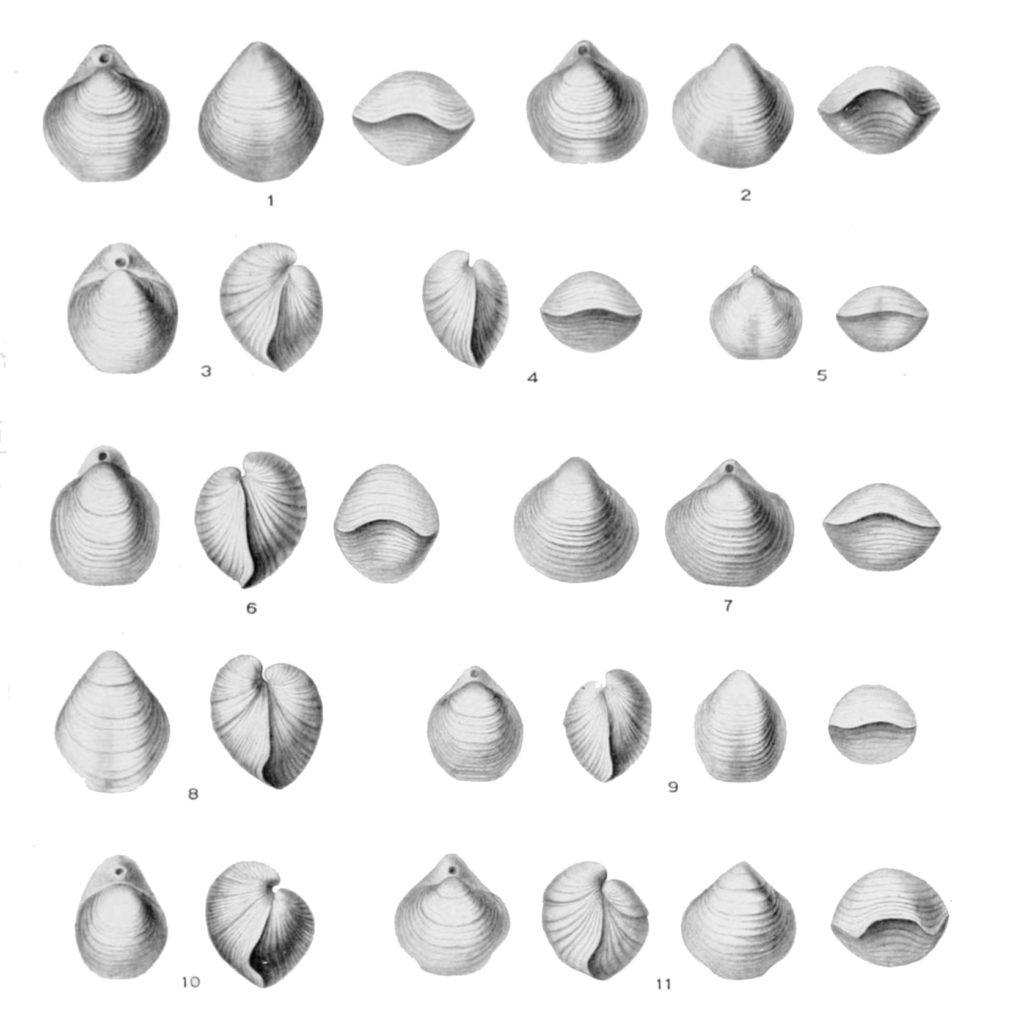
Plate XXVIII transcript
- Composita girtyi Raymond. Three views of a wide individual with a shallow sinus and nearly equal valves. All of figures i-ii are one-half larger than natural size, and are all from specimens collected from the Vanport limestone at New Castle, Pa.
- The same species. A specimen similar to the preceding, but with a deeper sinus.
- The same species. A narrow individual with a deep pedicle valve.
- The same species. A narrow shell with almost no sinus.
- The same species. A small specimen with a slight sinus in both valves.
- The same species. A narrow individual with a very convex pedicle valve.
- The same species. A wide specimen with sub-circular outline and shallow sinus.
- The same species. A narrow shell with pentagonal outline and convex valves.
- The same species. Four views of a somewhat square shell with nearly equal valves and a slight sinus.
- The same species. A narrow shell with an extremely convex pedicle valve.
- The same species. Four views of a wide shell with a pronounced sinus and nearly equal valves.
Description by P.E. Raymond
Family ATHYRID^ Phillips.
Genus Composita Brown.
Composita girtyi sp. nov.
Plate XXVIII, figures i-ii.
Shell small, almost globose, with a slight fold on the brachial and flat sinus in the pedicle valve. There is considerable variation in the outline of these shells as viewed from above the brachial valve, and in the strength of the fold and sinus. In some the outline is almost circular, while in others it is oval, as the shells are sometimes longer than wide. The sinus of some specimens is merely a flattening of the ventral valve toward the front, while in others the sinus is a narrow groove extending almost to the beak. A single specimen which probably belongs to this species has a narrow sinus in both valves, like Composita emarginata Girty from the Permian of Texas. This is, however, the only specimen seen which shows any trace of a sinus in the brachial valve, and may represent another species. The surface is smooth except for the strong, rather distant lines of growth. The entire interior has not been seen, but weathered specimens show rather closely coiled spiral brachidia.
This shell is much smaller that Composita subtilita (Hall) and is readily distinguished from the young of that species by its globose form and the contour of the front of the shell. It is more closely allied to Composita mexicana (Hall), but the fold and sinus are not so strongly delimited as in that species.
A large specimen is li mm. long, lo mm. wide, and 9 mm. in thickness. One of the narrow shells is 10 mm. long, 8 mm. wide, and 9 mm. thick. A less tumid shell is 10.5 mm. long, 10 mm. wide, and 7 mm. thick. The majority of the shells have about the proportions of the first of these.
Locality. — This is one of the most common shells in the Vanport limestone in western Pennsylvania. It has been found at Wampum, New Castle, and Kittanning. The co-types are from the abandoned quarry between New Castle and New Castle Junction. In this quarry the shell is especially abundant, over 1,200 specimens having been picked up there. The species is named for Dr. George H. Girty, whose studies have so greatly extended our knowledge of the invertebrate faunas of the Carboniferous and Permian.
Other possible examples of Composita.
References
- P. E. Raymond. 1911. A preliminary list of the fauna of the Allegheny and Conemaugh series in western Pennsylvania. Report Pennsylvannia Topographical and Geological Survey Committee Page 152
- Fossilworks.org – Matches for Pennsylvania specimens of Composta within the Carboniferous period of time

